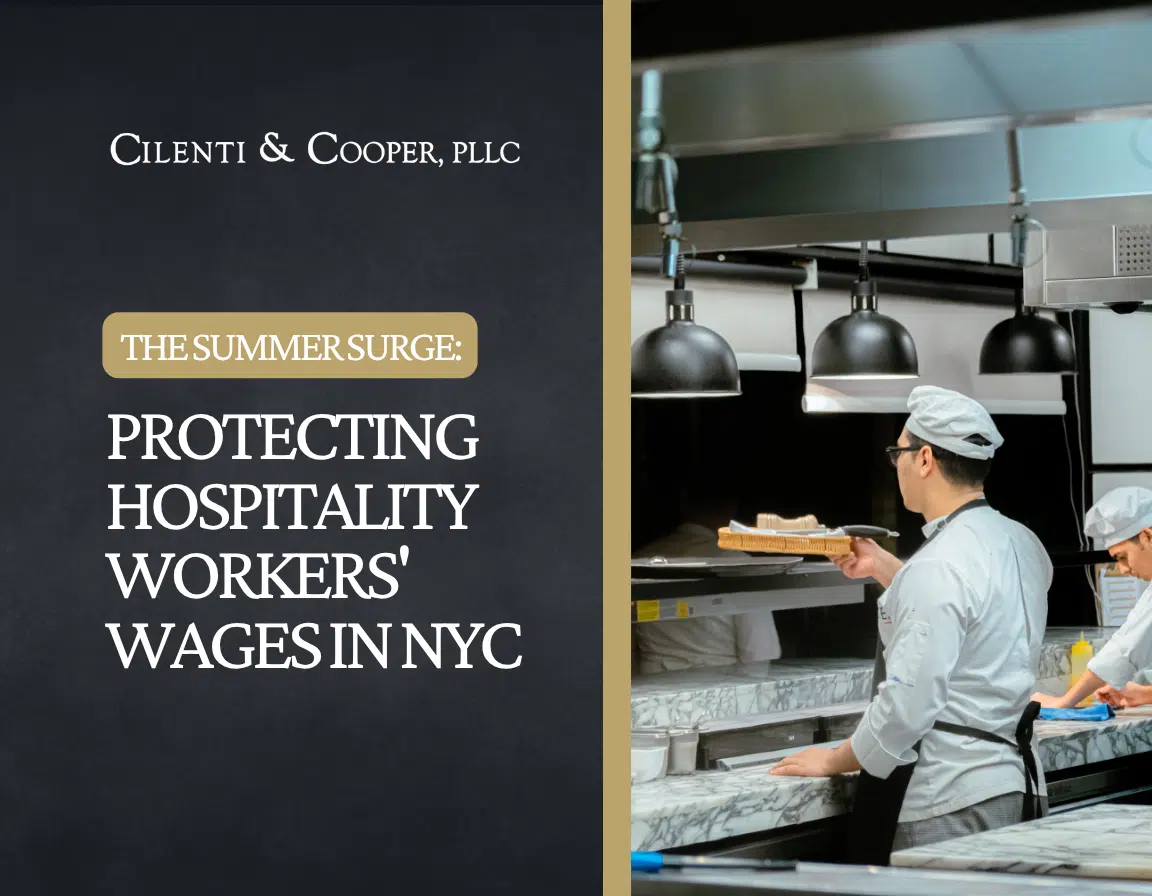As opposed to the federal minimum wage, which amounts to $7.25 per hour, New York State had higher goals. Namely, New York State introduced legislation as part of the 2016-17 State Budget that enacted a statewide $15 minimum hourly wage plan to make the minimum wage a living wage. It included the annual hourly minimum wage increase beginning in 2017 and, as of December of 2018, New York City was the first place to see this plan come to fruition. However, it only included general workers, while service workers and other tipped employees are still under the threshold outlined by that legislation.
We will explore how minimum wage differs by location and by industry to see how much a New York state employer is supposed to pay their workers and the minimum salary you should have. Let us start by breaking down the information by location; after that, we will highlight the differences in industries and the reasons behind different wages. This should provide a full picture of how much you should expect for your labor, depending on the place you live.
Minimum Wage by Location
Legislation has ensured that every part of New York State can progress at its own pace, with New York City leading the way. We will cover the newest changes – namely, those that came into being at the beginning of this year.
However, before we go deeper into this subject, it will be useful to mention how some of the changes that came into power before this. Namely, the legislation foresaw that the small and large employers from New York City adjust the wages paid at a different pace. Large employers, those with 11 employees or more, were to implement the changes at the beginning of 2019, while small employers with less than 11 employees had until 2020 to adjust to changes. This, of course, applied only to the general workers.
New York City
As we already mentioned, the city of New York’s minimum wage is $15 per hour from December 31st, 2018.. However, , if you are a tipped worker in the hospitality industry, the hourly minimum wage will continue to be $12.50 for service workers and $10 for food service workers. Seeing how New York City has the highest living standards and costs, it is no wonder that it is the first place where the proposed minimum wage rate increases are coming into power.
Additionally, workers in a big fast-food establishment, such as McDonald’s or Burger King, are entitled to the minimum hourly wage of $15 ever since 2019. A good thing to mention here would be that the giant fast-food chains – as per state law-are defined as any fast-food establishment with at least 30 locations nationwide where customers need to order and pay for their food before consuming it.
Westchester County and on Long Island
The next highest minimum wage rates are in Westchester County and on Long Island, with the minimum pay for the general jobs being set at $14. It was a $1 raise from 2019’s rates when the minimum was $13. That will mean an extra $40 a week for a general worker with a full-time minimum wage job. This part of the state is projected to increase the minimum wage to $15 by the end of 2021. That is most definitely something to look forward to, especially considering current circumstances.
Non-tipped employees in the hospitality industry within this part of the state are now also entitled to be paid $14.00 per hour, which will also increase to $15.00 per hour at the end of 2021. Meanwhile, the minimum wage rate for tipped workers in this part of the state is now $11.65 for service workers and $9.35 for food service workers. These rates are set to increase to $12.50 and $10.00, respectively, at the end of the year.
Rest of the State
The rest of New York state has seen a less ambitious increase, but an increase nonetheless. Currently, the minimum wage rate for general workers has risen to $12.50 per hour, from $11.80, where it was in 2020. Again, tipped workers in the hospitality industry have a lower rate – $10.40 per hour for service workers and $8.35 for food service workers. Furthermore, there is the difference mentioned above for service workers in big fast-food chains – all those not working in New York City have received an increase in their hourly wage.
As of the beginning of this year, it is $14.50, raising from $13.75, and slowly getting closer to the standard set by New York City. The good news is – the minimum hourly wage for fast-food workers outside New York City is scheduled to increase to $15 on July 1st, 2021.
Additionally, there is an issue of an employer having an employee that works in two minimum wage regions. The minimum wage rate paid in that case is the highest rate for all hours worked. Another solution would be dividing the pay so that each hour worked in each region is paid at the applicable minimum wage rate for that region.
Minimum Wage by Types of Industry
There is one main distinction in industries, as seen by the minimum wage requirements. One includes all industries, jobs, and workers that do not receive additional income from their services, except for their pay. Others include the industries that have a custom of receiving gratuities from customers – the so-called tips. We will touch upon those differences and explain them further in the following text.
Moreover, the legislation requiring that all employees in New York State receive at least the applicable hourly minimum wage rate is called the Minimum Wage Act (Article 19 of the New York State Labor Law). It also includes domestic workers and employees in the nail and salon industry. Additionally, regulations that are known as ‘Wage Orders’ set individual requirements that are industry-specific. The rates contained in these Wage Orders may differ from the general minimum wage rate.
General
General workers are, simply put, those who are not in the field of work where they receive tips. That includes a wide variety of occupations – from office workers to manual laborers. Their minimum wage requirement is higher than the tipped workers’ for the sole reason – it constitutes their entire hourly wage.
Concerning these industries, New York City has already reached the final minimum wage increase outlined in the legislation. In the beginning, the discrepancy between minimum wage paid by a small employer and a large employer was $0.50, with it being equal starting December 31st, 2019. The rest of New York state is slowly but surely catching up, with Westchester County and Long Island leading the way. The projected wage increase for those areas should reach $15 by the end of 2021, while the rest of the state’s exact time is yet to be determined.
Additionally, you can have two types of positions as a general worker: exempt or non-exempt. The first one typically means that you will not qualify to receive overtime pay. It also means that you fall into the category of people who earn a minimum of $684 per week, as FLSA stipulates that only salaried employees and earning over $684 per week can be exempt..
Tipped
The federal government defines tipped employees as those who regularly receive at least $30 a month in tips. One of the main reasons why hourly wage for tipped workers is lower than others is that their payment comes in two parts: minimum wages paid by the employer and credit for the tips received. This affects anyone who is working in the hospitality industry, and it will affect you if you are, for example, a food service worker.
The Fair Labor Standards Act mandates that the employees who receive the above-mentioned amount in tips be paid at least $2.13 per hour in wages, constituting the federal minimum cash wage. This means that if you’re a server, bartender, or another service employee who receives tips, your employer is only required to pay $2.13 per hour in wages. That is also known as the subminimum wage. However, that amount is usually higher and differs from state to state, as the employers must abide by the state’s wage rate, with the federal wage rate setting the bare minimum.
As detailed above, in New York, an employer may pay a tipped hospitality worker slightly below the statutory minimum wage rate. This is called the tip credit provision or tip credit allowance. It allows the employers of tipped workers to pay them a lower minimum hourly rate, as it is expected that they will earn a sufficient amount in tips. However, if the tips you receive, combined with the cash wage, do not reach the designated minimum hourly pay rate, your employer will have to ensure you are paid at least the minimum wage. It is essential to note that, for the employer to claim a tip credit/allowance (and pay a reduced hourly wage in addition to the tips received by the employee), the employer must prove that the employee did receive such tips. Employers must also give employees, at or before the time of hiring, written notice that the employer will apply a tip credit or allowance toward their minimum wage.
The minimum wage that needs to be paid by the employer in New York state for non-hospitality workers is, as of December 31st, 2019, as follows:
- New York City (both small and big employers): $11.35 or $12.75 per hour (depending on the amount of tips received per week)
- Westchester County and on Long Island: $10.80 and $12.05 per hour (depending on the amount of tips received per week)
- The rest of the New York State: $9.45 or or $10.60 per hour (depending on the amount of tips received per week)
iAdditionally, with the end of 2020, there have been some changes in which industries are applicable for tip credit provision. Namely, employers subject to the Wage Order for Miscellaneous Industries and Occupation are no longer able to apply for a tip credit when calculating minimum wage for employees who receive tips regularly. The jobs covered in this Order include, but are not limited to, valets, nail salon workers, hairdressers, and other non-hospitality workers who do receive tips. However, this does not include employers whose occupations are covered in the Hospitality Industry Wage Order. They still may apply for a tip credit, in line with the increased amounts stipulated by New York state’s updated laws.
With these changes in mind, New York employers have had to act promptly and ensure compliance with the law. Those New York employers in the Miscellaneous Industries Wage Order who have implemented the tip credit in their employees’ salaries should have begun phasing out the use of the tip credit starting June 2020 and must have it eliminated by now. Hospitality industry employers should implement payroll changes to reflect the increased minimum wage and changes to the tip credit and, under the Wage Theft Prevention Act, giving their employees prior notice of these changes in writing, at least seven days before they occur.
There are other industries that have specific instructions and Wage Orders concerning minimum wage workers, such as the ones in the building service industry, non-profit making institutions, and the farmworkers, each with their Wage Orders and precise set of rules and regulations. However, as they more or less fall into similar categories as general and tipped workers’ industries, we will not include them in this article for the sake of clarity and conciseness.
Conclusion
There are different minimum wage rates in various industries and other parts of New York state. The state’s minimum wage is the very least you should be earning when working a full-time job – especially if you are putting in overtime. The only right thing to do is to ensure that you have been paid a fair wage according to the hours you put in.
Information plays a crucial role in ensuring you do not work for naught and that you are not having any unpaid wages for your labor. Researching the minimum wage requirement for the job you do is of utter importance and can only benefit you in the long run. Additionally, making sure your knowledge is up-to-date with the most recent labor laws is a great way to ensure you are being paid fairly. Seeing how some essential decisions have been made yet had inadequate media coverage, it is in your best interest to refresh your knowledge from time to time. Moreover, as a worker, you also need to pay attention to the taxes you pay, or it can cause issues in the long run, and that is a topic that requires a lot of deliberation and research to understand correctly.
Additionally, seeing as wage theft occurs most often in tipped service jobs, where the laws seem the most complicated – it will serve you well to keep informed about your rights and your employer’s obligations. In case you are not sure you are being paid enough, you can also contact Cilenti & Cooper, as they specialize in helping workers recover the wages they have earned with their labor. From overtime pay to ensuring that there is no wage theft – they can help with a myriad of issues and prevent some from coming to pass by providing you with the full information you require.






